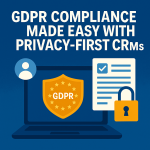In today’s digital landscape, your SaaS brand won’t grow on product quality alone. Visibility is key. And the path to visibility starts with one of the most underrated pillars of digital marketing: technical SEO.
SEO and SaaS visibility go hand-in-hand. But while most people obsess over keywords and content, it’s the technical side that makes or breaks your site performance. You might have the best solution in your market, but if search engines can’t crawl or index your content correctly, you’re invisible.
This article breaks down 10 killer technical SEO techniques — not just a checklist, but strategic insights that fuel visibility, improve site performance, and grow trust in your SaaS brand.
Why SEO and SaaS Visibility Depend on Technical Excellence
SEO and SaaS visibility are more than just marketing buzzwords. They reflect how well your brand performs where it matters most — in search results, on mobile devices, and in the eyes of your users.
Site performance also plays a crucial role. If your site is slow, clunky, or hard to navigate, it affects both rankings and retention. That’s why technical SEO should be the foundation of your online strategy.
Let’s explore the 10 killer techniques that will elevate your SaaS presence online.
1. SEO and SaaS Visibility Start with Speed
Site speed is no longer optional. Google considers it a ranking factor, and users consider it a deal-breaker. A delay of even one second can reduce conversions by 7%. For SaaS brands, this could mean the difference between a sign-up and a lost lead.
To improve speed:
- Compress images with next-gen formats like WebP.
- Minify CSS and JavaScript.
- Enable browser caching.
- Use a Content Delivery Network (CDN).
A faster site delivers better user experience — and better search rankings.
2. Mobile Optimization Is Now Mandatory
SEO and SaaS visibility rely heavily on mobile experience. With Google’s mobile-first indexing, your mobile version is your primary version. If it fails, so does your visibility.
Make sure your site is:
- Fully responsive.
- Quick to load on mobile data.
- Easy to navigate with thumb-sized tap targets.
- Free of intrusive interstitials (pop-ups that block content).
The takeaway? Don’t treat mobile as an afterthought. Design for it first.
3. Structured Data Helps Search Engines Understand You
Structured data, also known as schema markup, adds context to your content. It helps search engines “read” your pages more effectively, resulting in enhanced visibility through rich snippets.
For SaaS platforms, use:
- Organization schema (to define your brand).
- Product schema (to list key features or tools).
- FAQ schema (for help center or landing pages).
- Review schema (to highlight customer feedback).
Structured data isn’t flashy, but it’s powerful. When implemented correctly, it boosts your CTR and visibility instantly.
4. Clean URLs = Clean Rankings
SEO and SaaS visibility suffer when URLs are messy, long, or unreadable. URLs should be short, descriptive, and keyword-friendly.
Bad:
www.saasapp.com/page?id=123&ref=abc
Better:
www.saasapp.com/features/integrations
Use hyphens (not underscores), avoid unnecessary parameters, and always reflect the page’s actual topic. Clean URLs also improve click-through rates — users are more likely to trust and click on readable links.
5. HTTPS Isn’t Optional — It’s a Trust Signal
Security is a major concern for SaaS users. Google has made it clear: HTTPS is a ranking signal. If your platform still runs on HTTP, it’s time to make the switch.
An SSL certificate:
- Encrypts user data.
- Prevents tampering and interception.
- Builds trust with visitors.
- Improves search engine rankings.
Remember, no one wants to sign up on a platform that browsers label “Not Secure.”

6. Crawlability Controls Whether You Get Indexed
Crawlability refers to how easily search engines can access your site. If bots can’t crawl it, they can’t index it. And if they can’t index it, you won’t show up in search.
Steps to improve crawlability:
- Submit an XML sitemap via Google Search Console.
- Use robots.txt to block unnecessary paths.
- Fix broken internal links.
- Avoid redirect chains.
Also, audit your crawl stats regularly. Look for spikes, drops, or warnings that may signal technical problems.
7. Canonical Tags Prevent Duplicate Content Nightmares
SaaS sites often have content that repeats — different versions of pricing pages, similar blog posts, or variant URLs with tracking parameters. Without proper canonical tags, Google may see this as duplicate content.
Canonical tags tell search engines which version of a page is the “original.” This protects your rankings and ensures the right version appears in search results.
Make sure:
- Each page either self-canonicals or references the correct original.
- You avoid conflicting canonical signals.
- Pages with similar content have distinct keywords and intent.
8. Lazy Loading: Speed Up Without Sacrificing SEO
Lazy loading is a technique that defers loading of images or resources until they’re needed. This improves load speed significantly — especially on long SaaS feature pages.
However, poorly implemented lazy loading can block content from being indexed.
To get it right:
- Use native lazy loading (loading=”lazy” in HTML).
- Test with Google’s Mobile-Friendly and Rich Results tools.
- Avoid JavaScript-heavy solutions that require interaction to load.
Done right, it gives you the best of both worlds — speed and visibility.
9. Avoid Broken Links Like the Plague
Nothing kills user trust faster than a broken link. But beyond usability, broken links damage your SEO performance. They create crawl errors, waste crawl budget, and disrupt internal link equity.
Run monthly link audits using tools like:
- Ahrefs
- SEMrush
- Screaming Frog
Fix:
- 404 pages with redirects.
- Internal links pointing to outdated content.
- Legacy URLs that are no longer active.
Each fixed link is a repaired bridge — both for users and search engines.
10. Make Technical SEO Audits a Monthly Habit
SEO and SaaS visibility are not “set it and forget it” strategies. Your site evolves. Search engine algorithms change. User behavior shifts. That’s why you need a routine.
Create a monthly checklist:
- Speed test with PageSpeed Insights or GTMetrix.
- Check indexation in Google Search Console.
- Monitor mobile usability.
- Validate structured data.
- Audit redirects and broken links.
Set reminders, build dashboards, and treat technical SEO as an ongoing discipline. It pays off in the long run.
Wrapping It Up: Technical SEO Is Growth SEO
Here’s the truth most SaaS companies overlook: technical SEO isn’t just about pleasing Google. It’s about providing a smoother, faster, more trustworthy experience for your users. And that, in turn, drives growth.
SEO and SaaS visibility rely on strong technical foundations. You could have the best blog content, the most refined ads, and world-class UX — but if your site loads slowly, fails on mobile, or blocks search engine bots, it all falls apart.
So start with the fundamentals:
- Boost your speed.
- Fix what’s broken.
- Use structured data to tell your story.
- Stay on top of technical health.
And most importantly — treat your website as a living product. One that requires just as much love, care, and optimization as your SaaS platform itself.






